This month, the OISE book display is focusing on bringing awareness to the topic of endangered species and how you and your students can help ensure that these species do not disappear forever.
 A great way to start building your students understanding of endangered animals is with “Endangered: Wildlife on the Brink of Extinction” by George C. McGavin. This book provides an introduction to extinction and the largest five extinction periods. These periods include events such as volcanic eruptions, meteor strikes and climate change that have wiped out up to 95 percent of the species living during each period. McGavin highlights a sixth great extinction that will be the result of humankind’s abuse of the environment. This book covers the history of human exploitation and details plant and animal species that are either endangered or severely threatened. From bats to baleen whales, penguins to corals, this book presents a variety of species and a plea to stop current behaviors that negatively affect the planet. Packed with over 400 stunning photographs, this book is a great encyclopedia-style resource that can be used by students of all ages.
A great way to start building your students understanding of endangered animals is with “Endangered: Wildlife on the Brink of Extinction” by George C. McGavin. This book provides an introduction to extinction and the largest five extinction periods. These periods include events such as volcanic eruptions, meteor strikes and climate change that have wiped out up to 95 percent of the species living during each period. McGavin highlights a sixth great extinction that will be the result of humankind’s abuse of the environment. This book covers the history of human exploitation and details plant and animal species that are either endangered or severely threatened. From bats to baleen whales, penguins to corals, this book presents a variety of species and a plea to stop current behaviors that negatively affect the planet. Packed with over 400 stunning photographs, this book is a great encyclopedia-style resource that can be used by students of all ages.
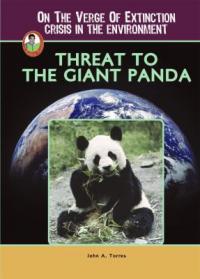 For a closer look on specific animals, check out the books in the series On the Verge of Extinction: Crisis in the Environment. Each book looks at a specific endangered animal and highlights cultural legends surrounding the animals, their habitat, the threats that have led to their endangered state, as well as conservation efforts. These books are perfect for children as they provide a glossary with phonetic pronunciations, a bibliography to find more information, and how to help. The series includes the titles “Threat to the Bengal Tiger”, “Threat to the Giant Panda”, “Threat to the Leatherback Turtle”, and more.
For a closer look on specific animals, check out the books in the series On the Verge of Extinction: Crisis in the Environment. Each book looks at a specific endangered animal and highlights cultural legends surrounding the animals, their habitat, the threats that have led to their endangered state, as well as conservation efforts. These books are perfect for children as they provide a glossary with phonetic pronunciations, a bibliography to find more information, and how to help. The series includes the titles “Threat to the Bengal Tiger”, “Threat to the Giant Panda”, “Threat to the Leatherback Turtle”, and more.
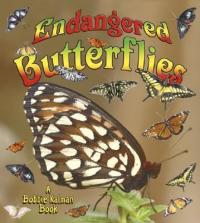 Another great children’s book for introducing endangered species is “Endangered Butterflies” by Bobbie Kalman. This book introduces concepts such as “vulnerable”, “endangered”, and “extinct”, and highlights the main threats to the species. You will also find information about butterflies, including their life cycle, eating habits and how they survive colder weather. The book describes conservation efforts that aim to help revive butterfly populations, and demonstrates ways you and your students can help too. Be sure to visit butterfly conservatories in your area, such as the Humber Bay Butterfly Habitat in Toronto, to learn about more ways in which you can take an active part in saving these endangered species. Packed with pictures of beautiful butterflies, this book will be sure to interest all of your students.
Another great children’s book for introducing endangered species is “Endangered Butterflies” by Bobbie Kalman. This book introduces concepts such as “vulnerable”, “endangered”, and “extinct”, and highlights the main threats to the species. You will also find information about butterflies, including their life cycle, eating habits and how they survive colder weather. The book describes conservation efforts that aim to help revive butterfly populations, and demonstrates ways you and your students can help too. Be sure to visit butterfly conservatories in your area, such as the Humber Bay Butterfly Habitat in Toronto, to learn about more ways in which you can take an active part in saving these endangered species. Packed with pictures of beautiful butterflies, this book will be sure to interest all of your students.
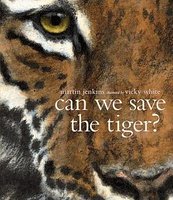 In his children’s book “Can We Save the Tiger?” Martin Jenkins aims to provide a more thought provoking approach to the discussion of endangered species. The book focuses on reasons species become endangered, describing the history of habitat loss, chemicals or the introduction of non-native species. Jenkins goes beyond black-and-white explanations that vilify humans as selfish people destroying the environment. Instead, Jenkins acknowledges the difficult choices humans face, sympathizing with a subsistence farmer tempted to kill a nearby tiger. This approach will show your students the complexity of the issue of endangered animals and encourage critical thinking. The book also provides examples of conservation efforts that have brought animals back from the brink of extinction, and URLs of conservation websites.
In his children’s book “Can We Save the Tiger?” Martin Jenkins aims to provide a more thought provoking approach to the discussion of endangered species. The book focuses on reasons species become endangered, describing the history of habitat loss, chemicals or the introduction of non-native species. Jenkins goes beyond black-and-white explanations that vilify humans as selfish people destroying the environment. Instead, Jenkins acknowledges the difficult choices humans face, sympathizing with a subsistence farmer tempted to kill a nearby tiger. This approach will show your students the complexity of the issue of endangered animals and encourage critical thinking. The book also provides examples of conservation efforts that have brought animals back from the brink of extinction, and URLs of conservation websites.
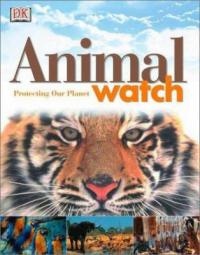 For a more hands on approach to teaching your students about endangered species, check out “Animal Watch: Protecting Our Planet” by Roger Few. This book covers issues from loss of habitat and the effects of climate change to hunting for sports and the debate on the role of zoos. Also included in the book are a number of easy and fun experiments that show the science behind the facts. These experiments displaying the effects of long-term litter, the importance of animal insulation and more! Few draws attention to pressing environmental concerns and offers suggestions on ways we can prevent further damage.
For a more hands on approach to teaching your students about endangered species, check out “Animal Watch: Protecting Our Planet” by Roger Few. This book covers issues from loss of habitat and the effects of climate change to hunting for sports and the debate on the role of zoos. Also included in the book are a number of easy and fun experiments that show the science behind the facts. These experiments displaying the effects of long-term litter, the importance of animal insulation and more! Few draws attention to pressing environmental concerns and offers suggestions on ways we can prevent further damage.
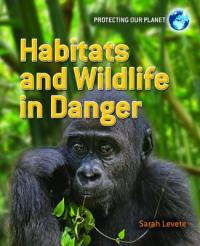 Sarah Levete’s “Habitats and Wildlife in Danger” is another helpful book that looks at the causes that lead to species becoming endangered. Levete provides an introduction to habitats, explaining what they are what makes a habitat. We then see different habitats and the threats that are harming these habitats. Each habitat covered has a description of the habitat, an outline of the issues surrounding the habitat and a blurb on what can be done to help. Levete also draws our attention to the impact of the loss of habitats on the animals that live there, making this book an excellent resource to teach your students the importance of habitats and how saving habitats can also save the animals that call them home.
Sarah Levete’s “Habitats and Wildlife in Danger” is another helpful book that looks at the causes that lead to species becoming endangered. Levete provides an introduction to habitats, explaining what they are what makes a habitat. We then see different habitats and the threats that are harming these habitats. Each habitat covered has a description of the habitat, an outline of the issues surrounding the habitat and a blurb on what can be done to help. Levete also draws our attention to the impact of the loss of habitats on the animals that live there, making this book an excellent resource to teach your students the importance of habitats and how saving habitats can also save the animals that call them home.
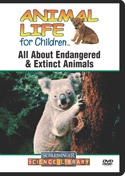 You can pair any of these books with “Animal Life for Children: All About Endangered and Extinct Animals”, a film that explains the factors that have led to the endangerment and extinction of species. The activity kit “Operation Lifeline”, presented by the World Wildlife Foundation, is also a great resource to teaching your students about the importance of saving our wildlife. The kit includes activities that will help your students develop their understanding of endangered species, while also developing key skills like research, mathematics and visual arts skills, among others. Activities include colouring pages, “Create a habitat chart”, and poem writing activities.
You can pair any of these books with “Animal Life for Children: All About Endangered and Extinct Animals”, a film that explains the factors that have led to the endangerment and extinction of species. The activity kit “Operation Lifeline”, presented by the World Wildlife Foundation, is also a great resource to teaching your students about the importance of saving our wildlife. The kit includes activities that will help your students develop their understanding of endangered species, while also developing key skills like research, mathematics and visual arts skills, among others. Activities include colouring pages, “Create a habitat chart”, and poem writing activities.
For a more interactive lesson on endangered species, don’t forget to check out some of our puppets. We have the Polar Bear, Chimpanzee, and Panda. These puppets and many more materials on endangered animals can be found in the book display case on the Ground Floor of OISE Library. They are available for check out too! Simply speak with the Circulation staff at the Service Desk and they’ll help you out!
